Let’s talk about the biggest misconception in alternative housing right now. When most people hear “shipping container home,” they picture something that looks like… well, a shipping container. Maybe with a few windows cut out and some basic insulation thrown in. Functional, sure, but hardly the stuff of architectural dreams.
Whether you’re dreaming of downsizing without sacrificing style, wanting a weekend retreat that won’t break the bank, or just fascinated by innovative architecture, these container house concepts will completely change how you think about modern living.
Premium Single Container Transformation
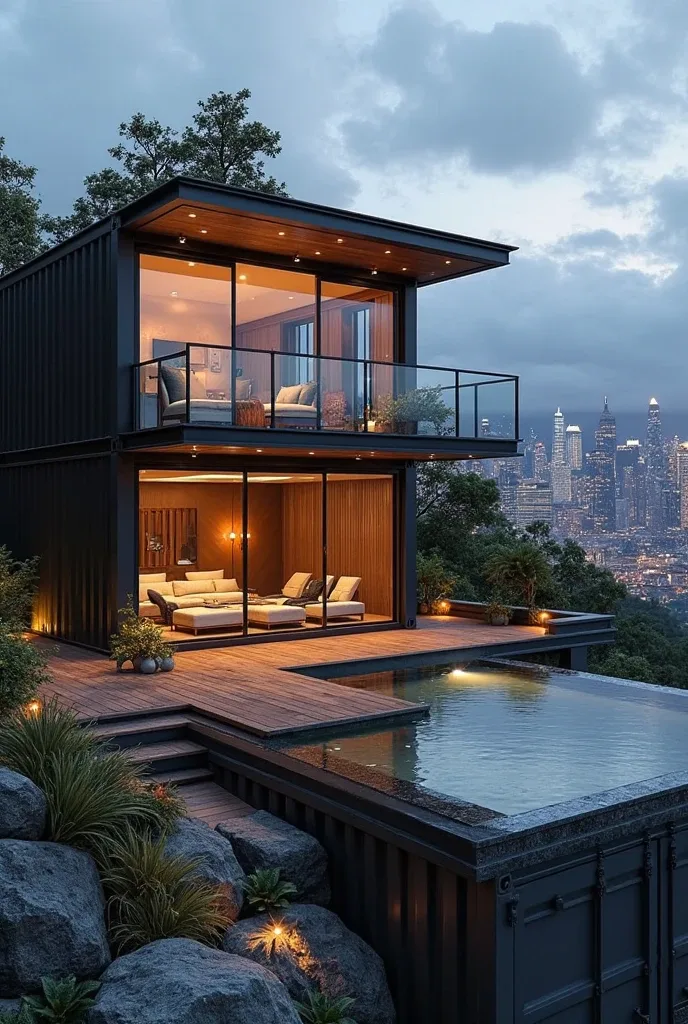
The elegance of this approach lies in its restraint—taking a single container and making it absolutely perfect. Floor-to-ceiling glass walls replace traditional siding, creating transparency that makes the interior feel spacious despite the compact footprint.
The magic happens in the details: premium hardwood floors that warm up the industrial steel, carefully planned lighting that creates ambiance, and high-end furnishings that feel curated rather than cramped. A rooftop deck extends the living space upward, taking advantage of vertical space that traditional homes often waste.
This design works especially well for urban settings where lot sizes are small but style expectations are high. It’s proof that luxury isn’t about square footage—it’s about thoughtful design and quality execution.
Stacked Container Luxury Retreat
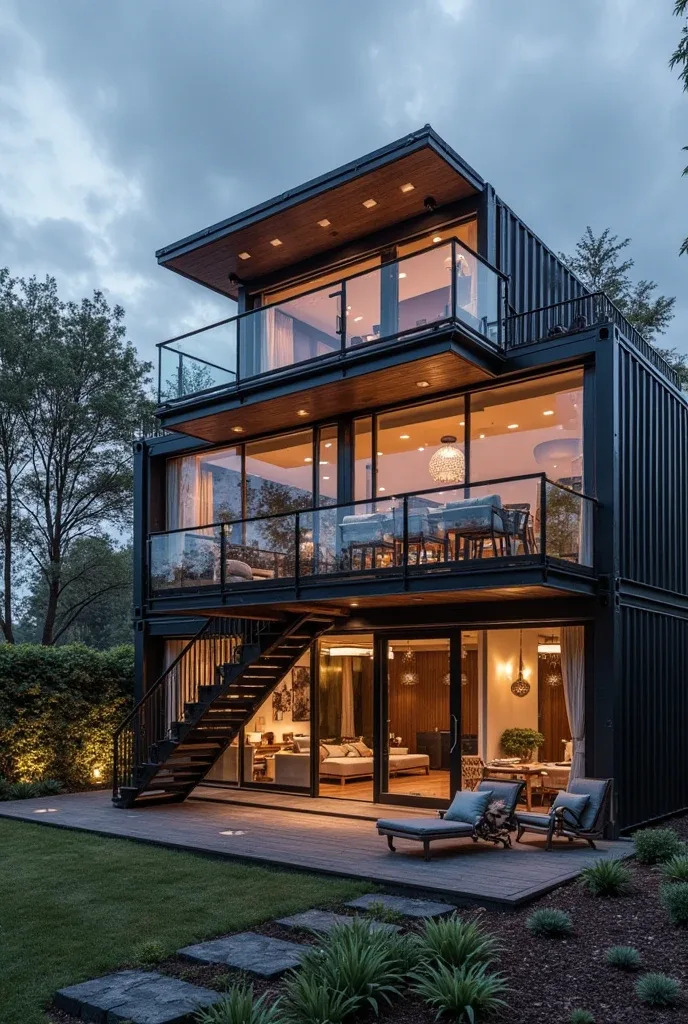
Vertical stacking multiplies your space while creating dramatic architectural impact. The key is making the connection between levels feel seamless—floating staircases, heighted spaces, and consistent materials throughout prevent it from feeling like two separate boxes stacked together.
The upper level becomes a private retreat with panoramic windows, while the lower level handles daily living functions. A rooftop terrace crowns the design, creating outdoor space that doesn’t compete with the building footprint.
This approach works particularly well on smaller lots where you need to build up rather than out. The vertical emphasis creates presence and drama that rivals much larger traditional homes.
Glass-Wrapped Container Oasis
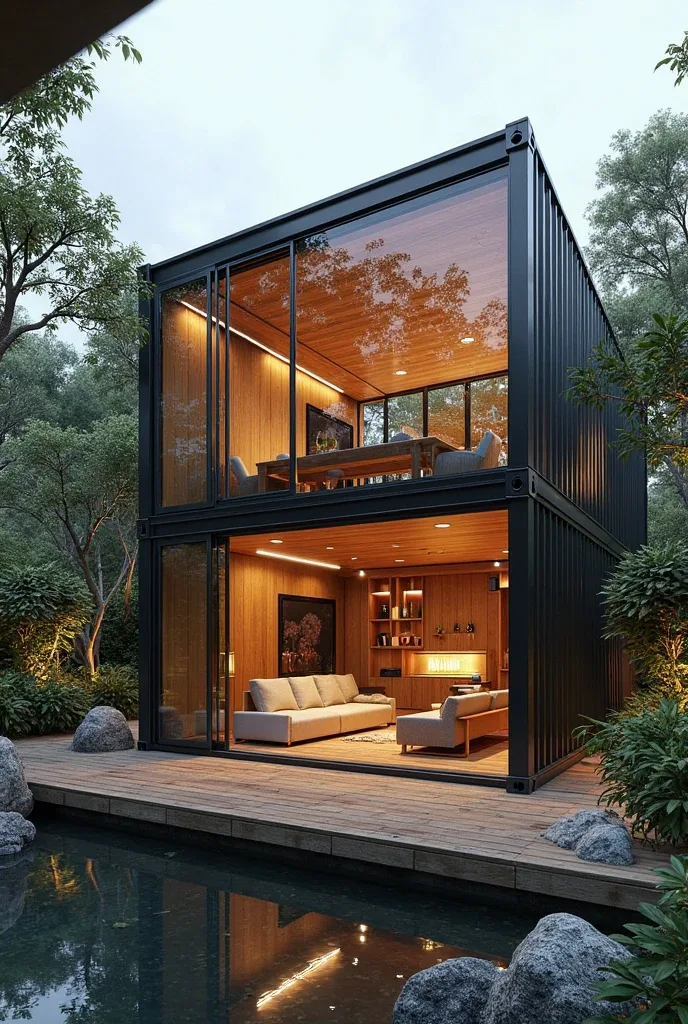
Completely wrapping a container in glass creates the ultimate integration between indoor and outdoor living. The steel structure becomes a minimal frame for expansive transparency, making the interior feel like it floats in the landscape.
The zen garden surroundings aren’t just decorative—they become part of the interior experience through the floor-to-ceiling glass. Water features add sound and movement that can be enjoyed from inside, while carefully planned landscaping provides privacy without blocking views.
This design philosophy works especially well in natural settings where the landscape is part of the appeal. The glass wrapper makes the container disappear visually while maintaining its structural integrity.
Elevated Container with Infinity Edge
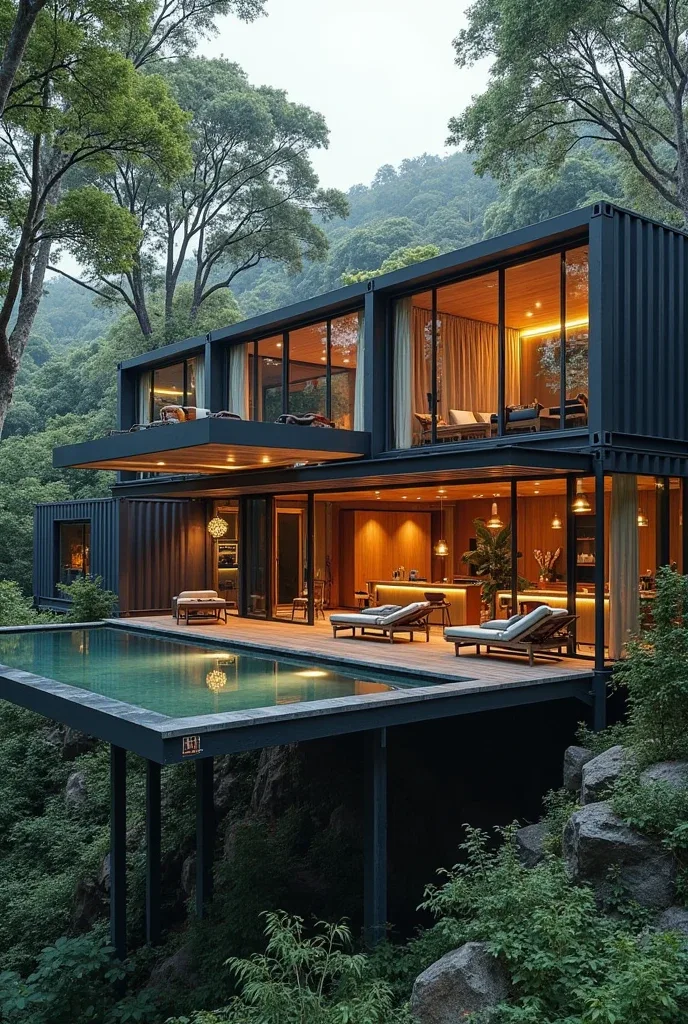
Lifting the container on steel pillars creates multiple benefits: better views, minimal site disturbance, and the opportunity for dramatic features like an infinity pool that seems to float in the landscape.
The elevation strategy works particularly well on sloping sites where traditional construction might require extensive grading. The container floats above the natural landscape, minimizing environmental impact while maximizing visual drama.
The infinity pool isn’t just luxury—it’s smart design that extends the living space horizontally while the elevation extends it vertically. Every decision works together to maximize the impact of the compact footprint.
Multi-Level Container Compound

Three stacked containers create the square footage of a traditional home while maintaining the efficiency and sustainability of container construction. Each level can have its own character while contributing to the overall architectural composition.
The key is creating visual and functional connections between levels. Strategic window placement aligns views between floors, while consistent materials and finishes create unity. The rooftop garden provides outdoor space and helps insulate the top level.
This approach allows for traditional room separation—perhaps living spaces on the ground level, bedrooms on the second level, and a office or studio on the top level—while maintaining the efficiency advantages of container construction.
Cantilevered Container Sanctuary
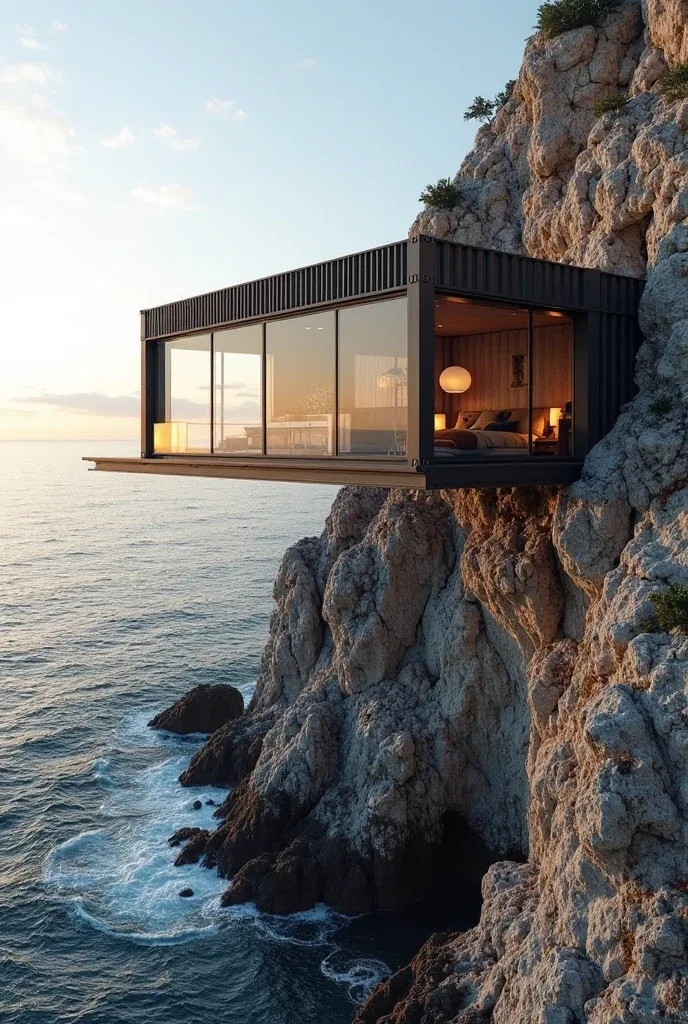
Cantilevering a container over dramatic terrain creates one of the most striking architectural moments possible. The engineering challenge becomes an opportunity for breathtaking design that seems to defy gravity.
The cantilever strategy works especially well on clifftop or hillside sites where traditional construction would be complex and expensive. The container becomes a viewing platform for spectacular natural scenery while requiring minimal site disturbance.
Premium natural materials inside—stone, wood, high-end metals—create luxury that feels appropriate to the dramatic setting. The contrast between the industrial container and refined interior materials creates sophisticated tension.
Glass Box Container Villa
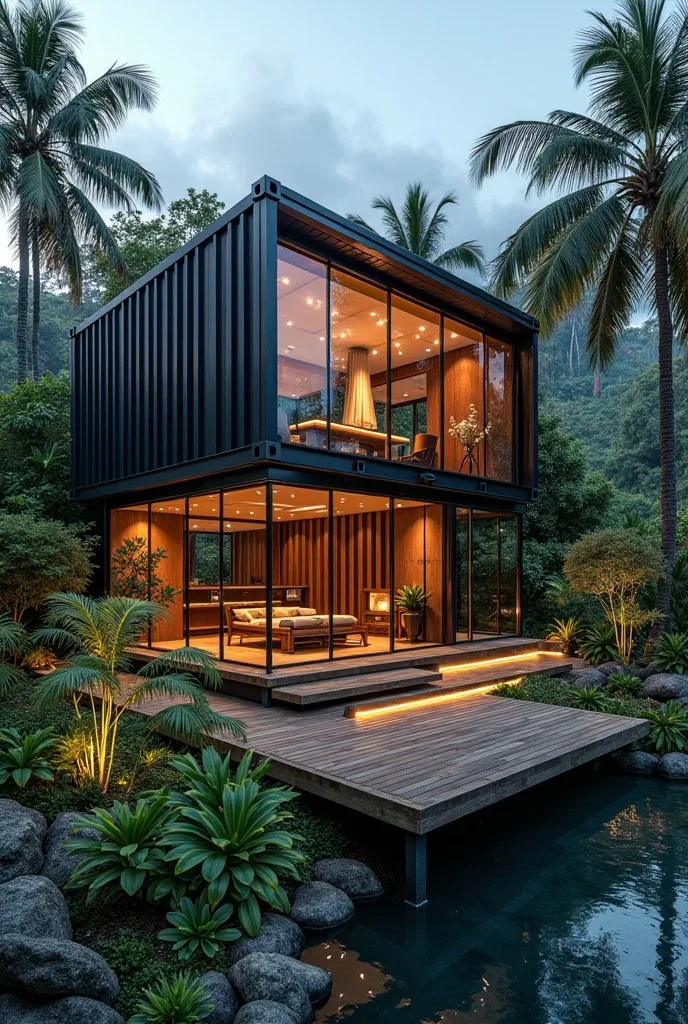
Encasing the container in a modern glass structure creates a house within a house—the container provides structural support and defined spaces while the glass envelope creates expansive living areas and seamless indoor-outdoor connections.
Double-height ceilings in the glass areas make the spaces feel generous and open, while the container provides intimate, cozy spaces for sleeping and private activities. It’s the best of both architectural worlds in one design.
The tropical landscape integration isn’t just aesthetic—it provides natural cooling and privacy while creating the zen garden atmosphere that makes the glass enclosure feel like a pavilion rather than a fishbowl.
Floating Container Home
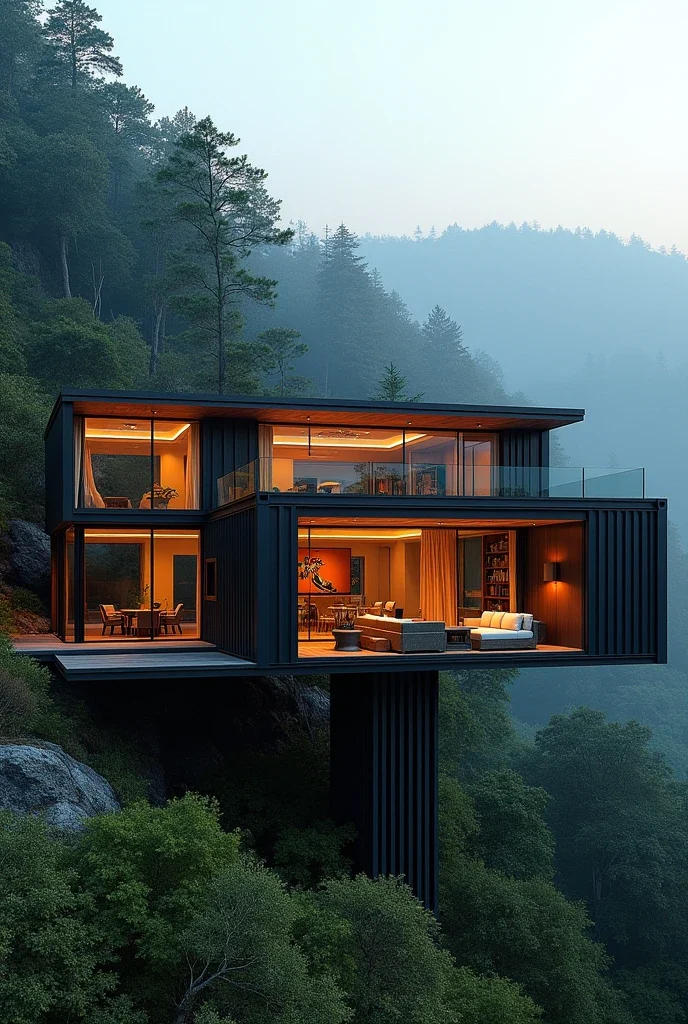
The illusion of floating creates one of the most magical effects in container architecture. Minimal steel columns disappear visually, making the container appear to hover effortlessly above the landscape.
This design strategy works particularly well in forest settings where the home can float among tree canopies, or in areas prone to flooding where elevation provides practical benefits alongside visual drama.
The minimal ground disturbance required for the support columns makes this approach environmentally sensitive while creating architecture that feels like it barely touches the earth.
Courtyard Container Complex
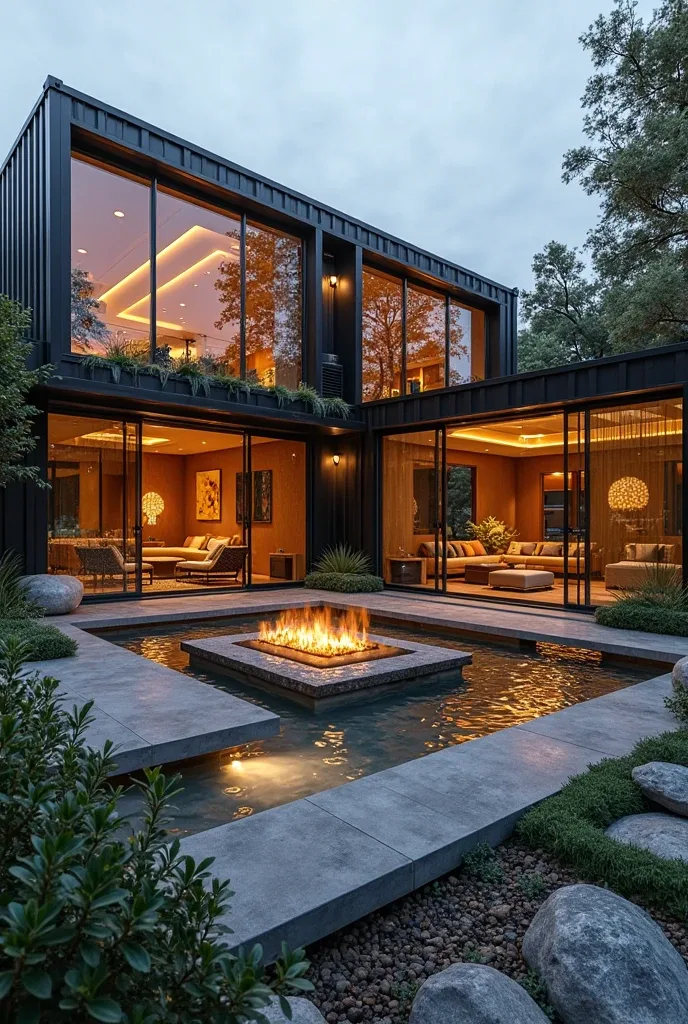
Arranging multiple containers around a central courtyard creates privacy and outdoor living space while maintaining efficient construction. The U-shaped configuration protects the courtyard from winds while creating multiple interior spaces with different orientations and functions.
The central water feature isn’t just beautiful—it provides cooling and white noise that enhances the courtyard experience. Glass connections between containers create sight lines that make the complex feel unified rather than fragmented.
This layout works especially well for clients who want separation between public and private spaces, or for multi-generational living where independence and connection need to be balanced.
Transparent Container Pavilion
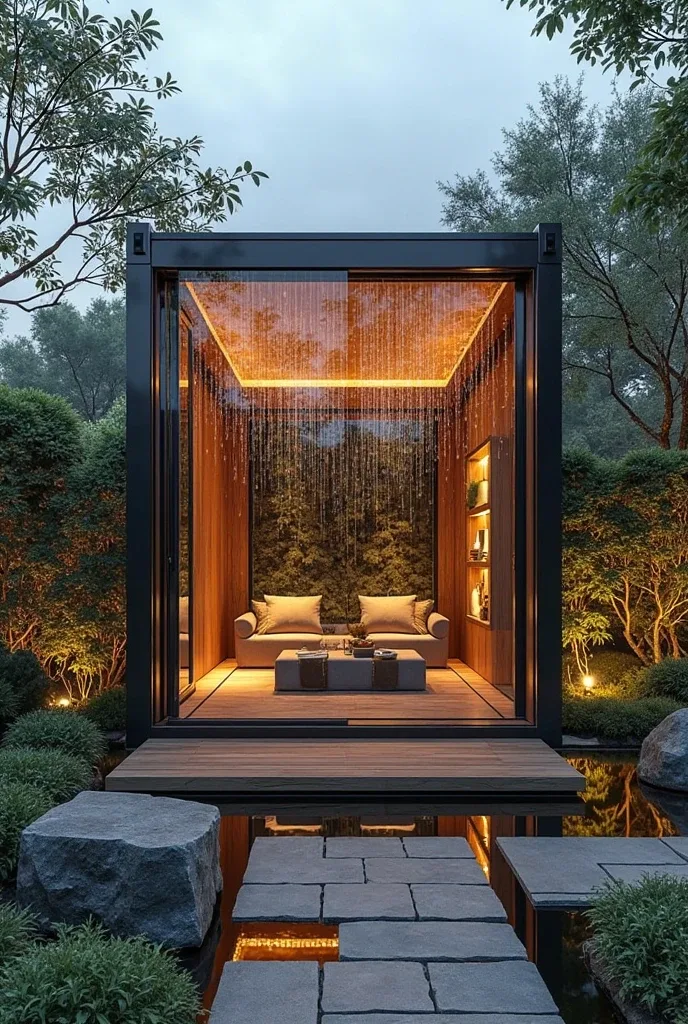
A completely transparent glass facade transforms the container into a display case for beautiful interior design. The dramatic contrast between the industrial container and refined interior creates sophisticated tension that’s endlessly interesting.
The water curtain feature adds movement and sound while providing privacy when needed—you can see through it or be concealed behind it depending on lighting and viewing angle. It’s functional art that serves the architecture.
This approach works best when the interior design is exceptional—every furnishing and finish becomes part of the exterior view, so everything needs to be carefully curated and beautifully detailed.
Hillside Container Retreat
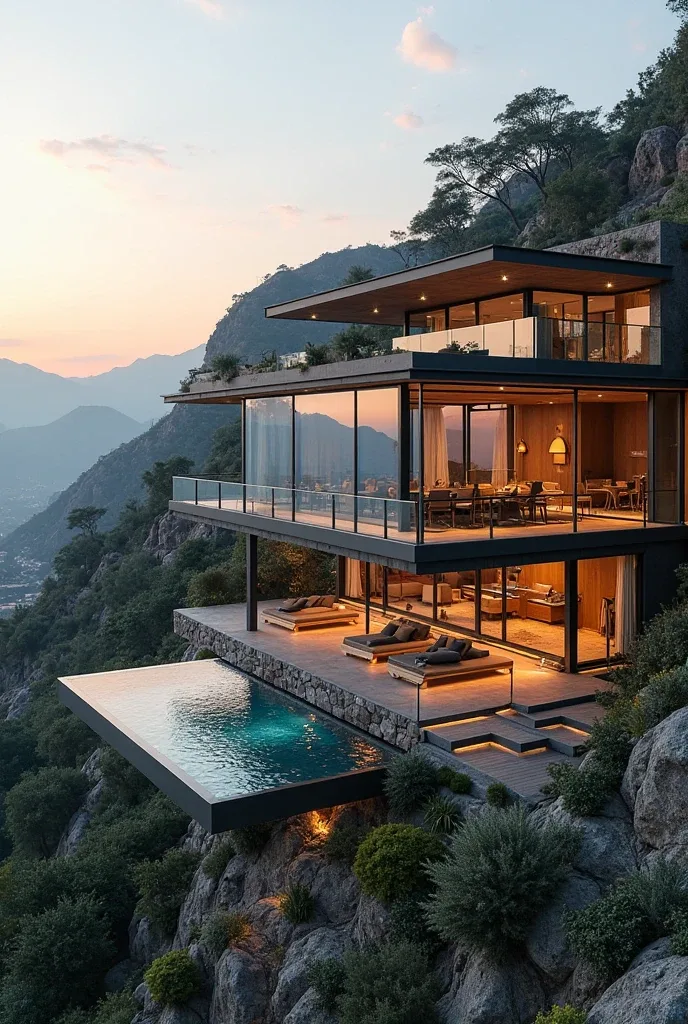
Building into a hillside allows the container to work with natural topography rather than against it. The extensive glass walls face the best views while the back of the container nestles into the hillside for protection and insulation.
Terraced landscaping creates outdoor living spaces at multiple levels, extending the usable area far beyond the container’s footprint. The infinity pool creates a horizontal element that balances the vertical drama of the hillside setting.
This strategy works particularly well on sites with challenging topography where traditional construction would be expensive and disruptive. The container becomes a way to create luxury living with minimal environmental impact.
Urban Container Retreat
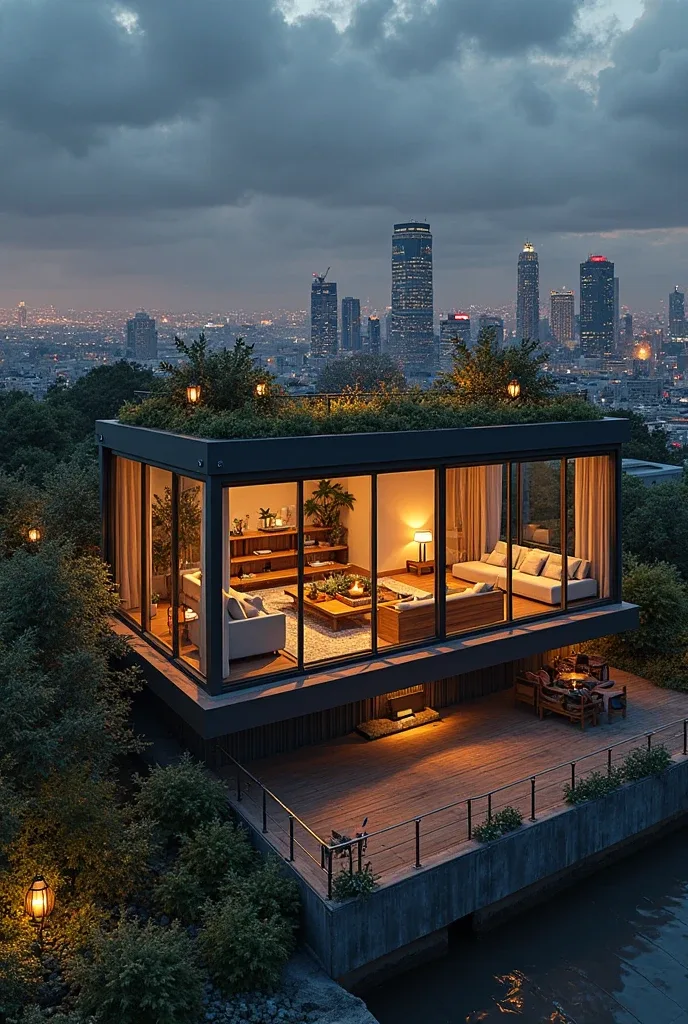
Placing a luxury container on an urban rooftop creates a private retreat above the city. The contrast between the industrial urban environment and the refined container interior creates sophisticated urban living that feels both connected to and removed from the city below.
The rooftop garden isn’t just decoration—it provides food production, air purification, and insulation while creating a green oasis in the urban environment. Modern furnishings and premium materials make the small space feel generous and luxurious.
This approach works especially well in dense urban areas where traditional expansion isn’t possible but rooftop space is available. It’s urban living that doesn’t sacrifice connection to nature or sophisticated design.
Final Thoughts
The most exciting thing about luxury container architecture isn’t just the sustainability or the cost efficiency—it’s the creativity that emerges when brilliant designers work within constraints. These aren’t compromise homes; they’re examples of what happens when limitations become opportunities for innovation.
The best container homes don’t try to hide their industrial origins. Instead, they celebrate the honesty of steel and glass while proving that sustainable design can be just as luxurious, just as beautiful, and just as sophisticated as any traditional architecture.
Whether you’re dreaming of a weekend retreat, considering downsizing without sacrificing style, or just fascinated by innovative design, container architecture offers possibilities that didn’t exist even a few years ago. The future of luxury living might just come in a recycled steel box—and it’s going to be absolutely stunning.

